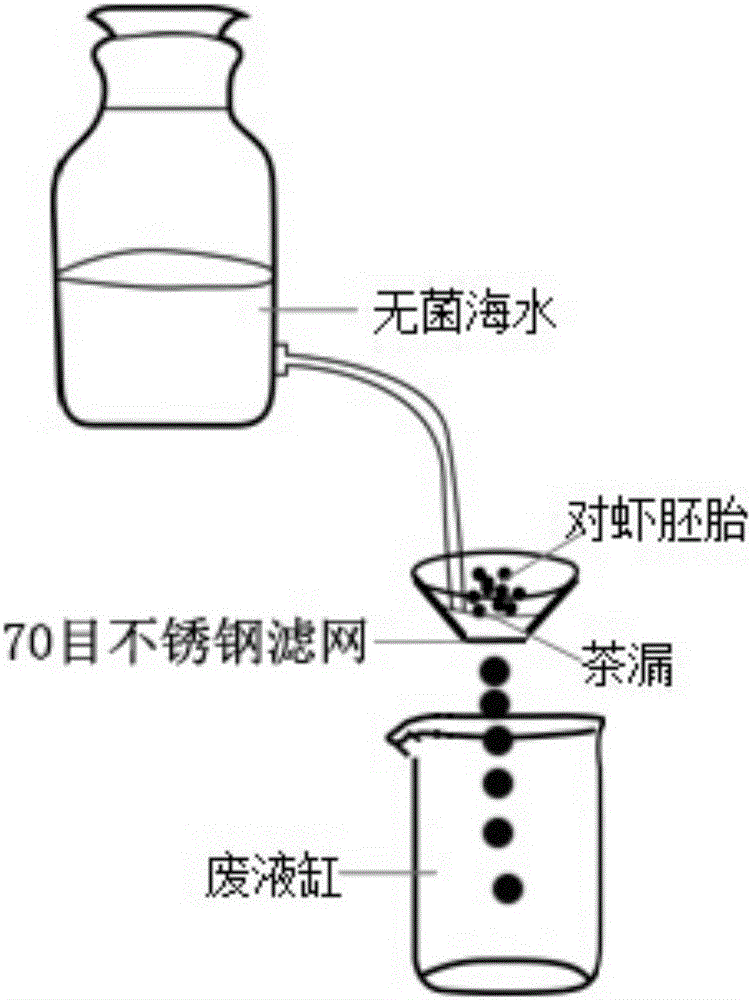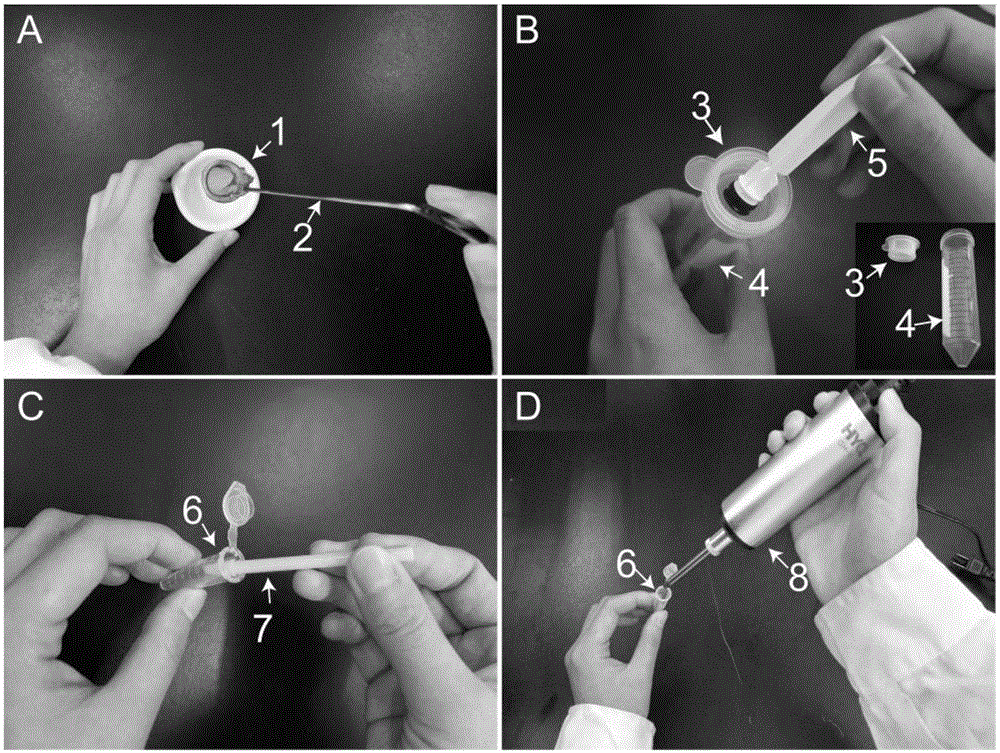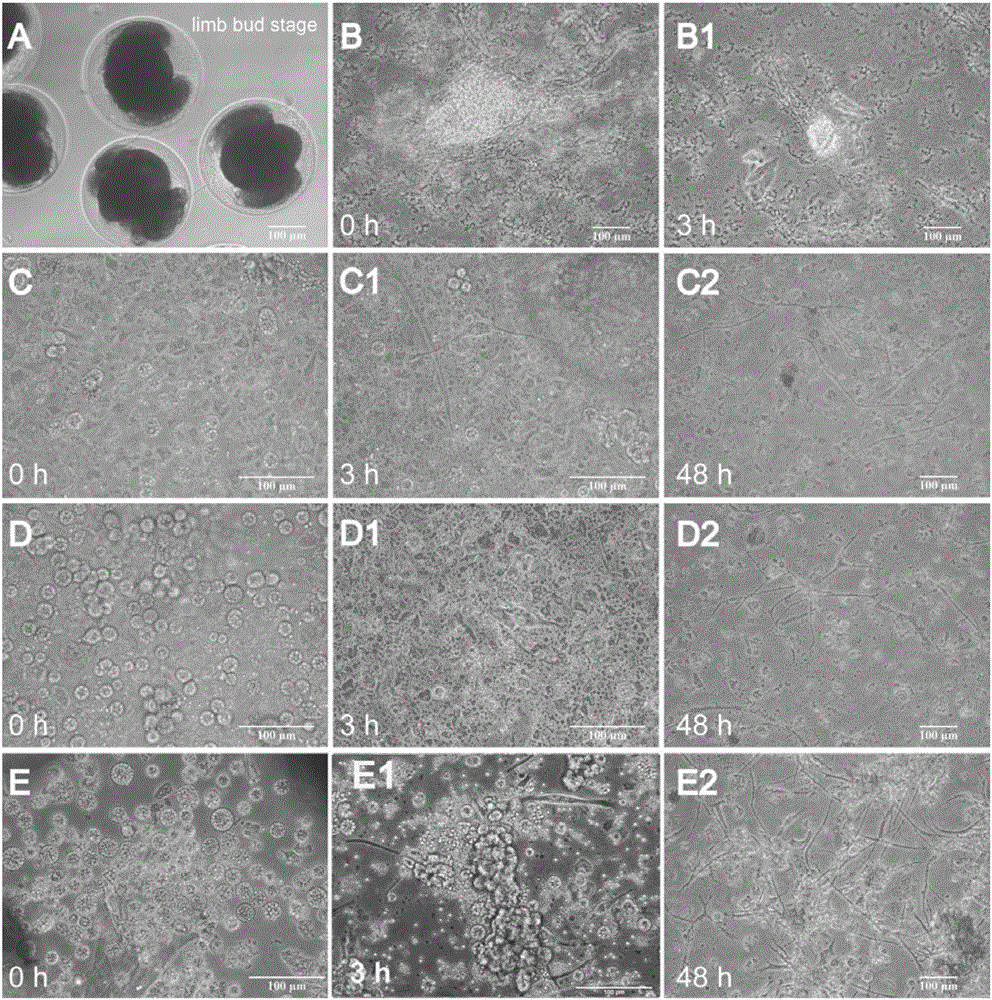Technology for dissociating and culturing prawn embryonic cells
A technology of embryonic cells and culture methods, which is applied in the field of aseptic isolation and in vitro culture of prawn embryonic cells, can solve the problems of no successful reports of line establishment, no continuous monolayer formation, and inability to obtain living cells, etc., and achieve operational Simple and fast, fast adherence to the wall, not easy to pollute the effect
- Summary
- Abstract
- Description
- Claims
- Application Information
AI Technical Summary
Problems solved by technology
Method used
Image
Examples
Embodiment 1
[0022] Example 1 Cleaning and disinfection treatment technology of early stage embryos of Penaeus japonicus.
[0023] Specific steps are as follows:
[0024] (1) Preparation of sterilized seawater: Fresh natural seawater was filtered through 16-20 layers of gauze and a 0.22 μm filter membrane in sequence, sterilized by high-pressure steam for 20 minutes, and cooled for later use.
[0025] (2) Materials for early embryos of prawns: Collect embryos at the limb bud stage 6-8 hours after spawning from the prawn nursery. box and transported back to the laboratory.
[0026] (3) Collection of prawn embryos: let it stand for a few minutes, and after the shrimp eggs settle to the bottom, use a plastic straw to collect the prawn embryos into a 50mL centrifuge tube, wash them with sterilized seawater for 5-6 times, and the suspension will die during the washing process. Embryos and impurity particles are sucked out.
[0027] (4) Washing of shrimp embryos: transfer the embryos to a 70-...
Embodiment 2
[0032] Example 2 Screening of the best dissociation method for the embryonic cells of Penaeus japonicus.
[0033] The outer layer of the embryo of the prawn has an egg shell formed by the lifting of the fertilization membrane to protect the embryo from the damage of the external environment. In order to obtain dispersed early embryonic cells, it is necessary to break the outer elastic and tough egg shell. Since the fertilized eggs of prawns are homoyolk eggs with complete cleavage, it is difficult to separate and culture early embryonic cells. The present invention has compared the separation and culture effect of 4 kinds of physical dissociation methods, as attached Figure 2-3 As shown, it is found that the separation effect of the stainless steel filter mashing method is the best, and a large number of living and complete embryonic cells and cell clusters can be obtained.
[0034] (1) Stainless steel filter smashing method: transfer the aseptically treated prawn embryos i...
Embodiment 3
[0040] Example 3 Culture method of Penaeus japonicus embryonic cells.
[0041] Specific steps: Inoculate the cell suspension of prawn embryos into culture flasks or culture plates, and inoculate at 28°C, 3% CO 2 cultured in an incubator. Observe the cell adherent growth every day, and replace 1 / 2 of the medium every 2 days according to the color change of the medium.
[0042] as attached Figure 4 As shown, the embryonic cells and cell clusters separated by the stainless steel filter smashing method can adhere to the wall and grow 2-3 hours after inoculation. The cells become elongated and spread out. There is a clear growth trend. After 48 hours, the adherent cells in the adjacent large cell clusters contacted each other and reached a semi-converged state. At this time, the amount of yolk granules decreased significantly.
[0043] The complete culture medium for prawns provided by the present invention optimizes whether to add the prawn muscle extract and the addition amo...
PUM
 Login to View More
Login to View More Abstract
Description
Claims
Application Information
 Login to View More
Login to View More - R&D
- Intellectual Property
- Life Sciences
- Materials
- Tech Scout
- Unparalleled Data Quality
- Higher Quality Content
- 60% Fewer Hallucinations
Browse by: Latest US Patents, China's latest patents, Technical Efficacy Thesaurus, Application Domain, Technology Topic, Popular Technical Reports.
© 2025 PatSnap. All rights reserved.Legal|Privacy policy|Modern Slavery Act Transparency Statement|Sitemap|About US| Contact US: help@patsnap.com



